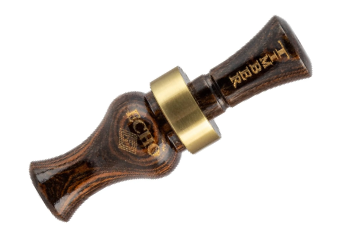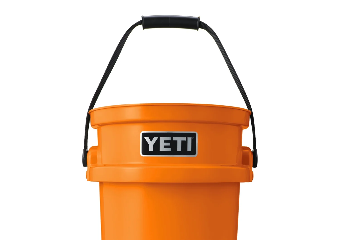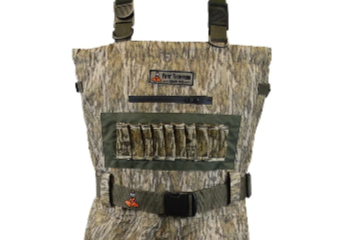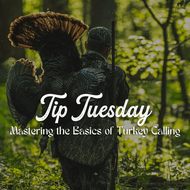Tip Tuesday: Mastering the Basics of Turkey Calling
Feb 4th 2025
Turkey hunting is all about patience, stealth, and, most importantly, calling. A well-timed and realistic call can be the difference between a slow morning in the woods and bagging a big tom. Whether you're a beginner or a seasoned hunter, knowing the basics of turkey calling will help you bring gobblers within range.
Let’s break down the most common turkey calls, when to use them, and how to make the most out of your calling strategy this season.
Understanding Turkey Calls
There are several types of turkey calls, each with its own advantages. Some calls are better for long-distance calling, while others excel at subtle, close-range communication. Here are the most popular turkey calls and how to use them effectively.
1. Box Call – The Beginner’s Best Friend
? Best for: Loud, realistic yelps and locating turkeys
? Pros: Easy to use, great volume, excellent for windy days
? Cons: Not hands-free, can be bulky
The box call is one of the simplest and most effective turkey calls, making it a favorite for beginners and seasoned hunters alike. It consists of a wooden box with a paddle lid that creates sound when scraped against the sides. Box calls are perfect for producing loud yelps, clucks, and purrs, making them an excellent option for covering large areas.
? Pro Tip: Lightly dragging the paddle across the box creates softer calls, while firmer pressure results in louder yelps—ideal for windy days when sound needs to travel further.
2. Slate (Pot) Call – Versatile and Realistic
? Best for: Soft, controlled calling with a variety of tones
? Pros: Produces natural sounds, great for close-range hunting
? Cons: Requires both hands, needs practice to master
A slate or pot call consists of a round surface (usually slate, glass, or aluminum) paired with a striker. This call is known for producing some of the most realistic turkey sounds, from soft clucks and purrs to aggressive yelps. It’s ideal for mid- to close-range calling when finesse is required.
? Pro Tip: Try using different strikers with your slate call to change the tone and pitch, making it sound like multiple turkeys in the area.
3. Mouth Call (Diaphragm Call) – Hands-Free Calling
? Best for: Close encounters and hands-free operation
? Pros: Allows for continuous calling while staying concealed, extremely versatile
? Cons: Requires practice, not ideal for beginners
Mouth calls, also known as diaphragm calls, are placed inside the hunter’s mouth and operated by forcing air over a latex reed to produce sound. These calls take time to master, but they are incredibly useful because they allow hunters to call without any hand movement—keeping them fully concealed while drawing a turkey in.
? Pro Tip: Start with a single-reed diaphragm call if you’re a beginner. Once comfortable, you can experiment with multiple-reed calls for more realistic and varied turkey sounds.
4. Gobble Call – Triggering a Competitive Response
? Best for: Challenging dominant gobblers
? Pros: Can trigger aggressive responses, works well in the right conditions
? Cons: Can scare off timid birds, should be used sparingly
The gobble call mimics the sound of a tom gobbling, often triggering a territorial response from other dominant males. While it can be effective, it should be used with caution—especially on public land—since it can also attract other hunters.
? Pro Tip: Gobble calls are most effective when used sparingly and in combination with hen yelps or clucks to create the illusion of competition.
When and How to Call
Knowing how to use a turkey call is only half the battle—understanding when to call is just as important. Here’s a quick guide to calling strategy:
✅ Early Morning: Start with soft tree yelps before increasing volume once turkeys fly down.
✅ Mid-Morning: Use clucks and purrs to create the illusion of a content, feeding hen.
✅ Afternoon: If turkeys are quiet, switch to subtle calling or a gobble to provoke a response.
✅ Evening: Soft yelps and purrs can coax turkeys into your setup before they roost.
? Pro Tip: If a tom responds to your call but stops advancing, try lowering your volume or switching to a different call to spark renewed interest.
What’s Your Go-To Turkey Calling Method?
Every hunter has a favorite calling technique, whether it’s the deep, throaty yelps of a box call or the subtle finesse of a slate call. What’s your go-to turkey calling method? Drop a comment below and let’s talk turkey! ??
Need new calls for the season? Stop by Fort Thompson Sporting Goods and check out our full selection of turkey hunting gear!















































